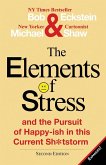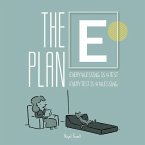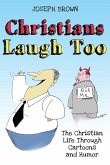Right off the bat, Sidney Harris makes it clear that he's not a scientist. He's a cartoonist who grew up in Brooklyn and drew for Playboy, but somehow he still knows about neutrinos and the big bang. "I get the gist of it," says Harris. "Neutrinos come from outer space. They go through everything, there's a billion of them going through my hand right now... maybe?" He's drawn over 35,000 cartoons during his career for publications including American Scientist, The New Yorker, Discover, National Lampoon, The Wall Street Journal and Science. And he's published several cartoon books covering a wide array of themes: His most recent deals with America's often-dangerous food industry.Cartoonists are basically dilettantes. "We know a little about a lot of things," says Sam Gross, a cartoonist for the New Yorker who's known Harris for 50 years and still meets him for French food on 46th Street in Manhattan frequently. "But with Sidney, as far as the science is concerned, he knows a lot more than a little bit."Harris claims he's never held a real job, except for one bout of semi-employment in his teens with Rapid Messenger Service on 59th Street. "I don't know if you'd call it a job," says Harris. "Of course I didn't know what was in the messages, I just delivered them." He could only stand the position for a couple of weeks before quitting.Nowadays, Harris comments on the periodic table and the principles of physics. His mind retains a collection of essential and quite elegant scientific facts (or rather, "factoids," as he calls them). Factoid number one: An atom is mostly open space. He once read that if not for that space between the particles in an atom, the Empire State Building would be the size of a pin. "This is made of atoms and it certainly seems solid," Harris says, knocking his fist on a wooden table. "But the neutrinos just go right through it!"Harris left the bustle of New York City several years ago and has lived in New Haven, Connecticut ever since. His house here resembles a maze, as if designed for his own entertainment. The upstairs studio where he works is accessible from two different staircases; each lined with a hodgepodge of paintings and framed cartoons. One upstairs room is littered with mail, pens without caps and baseball figurines-his love for the Brooklyn Dodgers was, he says, "sort of a religion."Harris plops into an office chair in front of a table and grabs a fountain pen. This is where he draws most often. A college-ruled notebook sits on the table, about a quarter full of identically spaced cartoon ideas, dated by the month. "This is all I did in two years," he says. "Pretty skimpy." He has piles of these notebooks, dates written across each cover going as far back as when he was in his 20s.Harris's cartoon inspiration comes from reading scientific magazines, newspapers and books, but his wry sense of humor comes directly from daily life. He can't help but see the underlying irony and hilarity of the seemingly mundane-in fact, he even cherishes samples of people's handwriting. A large sheet of paper on a door is covered in signatures he's photo-copied from checks people have paid him. Truly tickled by each autograph, he points out the silly loops, waves and sometimes single lines, questioning if many of them can still qualify as a person's name.Gross says Harris's work is so distinct and easily recognizable that "he doesn't even need to sign it." (Harris says the same about Gross) In fact, his drawings employ minimal line work and are quite simple-in contrast to their scientific humor.Though Harris wouldn't call cartooning a passion, it's not exactly work for him either. He says he just "knows how to do it," so he does it. His favorite part is coming up with the ideas. "But the drawings...it's like... I've got to do the damn drawing now."








